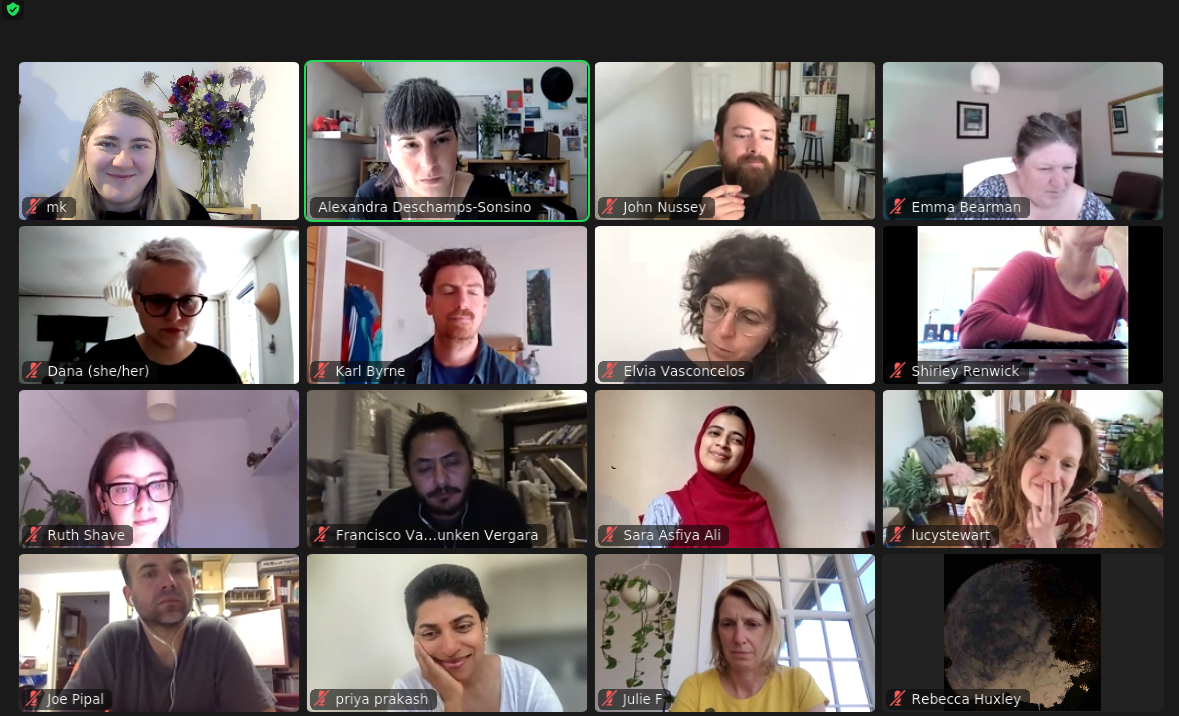I just finished curating and running a 4 week virtual residency on climate change for 15 creative people under the umbrella term of the Low Carbon Design Institute. As one of my sponsors Matt told me, ‘wait until you’ve done it twice before getting other people involved’ so these are some notes to myself so I make the appropriate adjustments for the second cohort in June next year.
It’s not about content. This was something that I think worked well. Climate change is well known, well documented and regardless of what we have called it a problem we have collectively ignored over my entire (geriatric millennial) lifetime. My first climate change related project was in 2005 when I worked on energy related behaviours in the home at the Design Council and little has changed since. Why the apathy? ‘Nature’, the weather and our place in it is both omnipresent and invisible in our everyday life. It barely features on the national education curriculum and has barely trickled into university level education, especially in the creative sector. As someone described it (sorry can’t remember who) it’s like an open tab in your browser you can’t quite close but you also don’t actually get around to reading. So there’s something for me about community and not content.
The structure of the first 2 weeks gave participants an opportunity to hear from a variety of voices but mostly to discuss those perspectives together in the afternoon. All of this was virtual as two talks (with Q&A) were delivered in the late mornings and I just left the Zoom open in the afternoon. The speaker’s perspectives weren’t perfect, some of them were very corporate by virtue of their employer, some were even very polarising, but all those conceptual chickens came home to roost in the group discussions.
The groups (people dipped in and out depending on availability) were able to move from a place of private discomfort to communal, voiced, discomfort. As a group, we often came back to issues of shame, guilt and inequality. Because climate change isn’t quite about energy choices, food systems, land management and carbon counting, but our response and role within those systems as self described ‘creative people’. The content made that role we might have and the tools that we might access a lot clearer.
I think people were able to break down the digital and geographic divide a little (not totally) by being frank with each other and talking through what they heard. I did an awful lot of facilitation in those afternoon discussions to make sure everyone was encouraged to speak. People accepted my gentle ‘cyber bullying’ with grace which I’m grateful for. The afternoon discussions were often very rich in link sharing and never got bigger than 4-5 people at once which helped people get used to each other in smaller groups.
For one or three participants the timings of these two weeks didn’t allow them to take part at the same time so they had access to the talks after the fact. I don’t think that’s a big issue as it allowed them to get *something* out of it anyway but perhaps didn’t make them socialise with the rest of the group in the same way. The virtual nature of the program doesn’t lend itself easily to forcing people to do anything and I knew I’d lose a bit of group cohesion as a result. It did however allow people to take part who couldn’t have come to London and had a variety of care and work obligations. So all things considered I think there are real advantages to running it virtually.
There is however a real challenge in making the talks resonate across nations. Not everything shared was applicable in another energy, food and landscape context and I’m still trying to think about whether this helps a participant or disenfranchises them. I also think it’s useless to go too ‘meta’ and not talk about specifics.
The aftercare. I didn’t really think much about this but it emerged as the program was finishing. The participants really wanted to know what the ‘next steps’ might be in terms of holding the group together over time. I took that as a good thing. As a kind of social proof they got on and I curated the group well. Thankfully I’m old enough to own a bunch of free Slack accounts so I decided to leave it open and schedule a quarterly catchup. I didn’t think about this part of it at all, not knowing how the program would go or what people’s expectations might be.
Some of the residents had already done artist residencies in the past while others were totally new. The ones who had more experience when asked were really positive which made me very happy. I’ve taught in foundation courses, run large scale events like the Mozilla Festival (2011 & 2012) and shepherded long-term communities like the London IoT meetup but had really no experience of running something like this. My sources of inspiration were my years of reading about design education, my research for my latest book and the residencies my friend Karola did as a contemporary jewellery maker.
Making the economics work. I ran out of steam when it came to looking for enough funding to cover all the speaker fees so most of the economic burden rests on my shoulders. I never wanted participants to pay for the residency and ideally they would actually be paid to take part. This means raising the profile of this experience tenfold to get more people (thanks to Simon, Ben & Matt for sponsoring some of the talks this year) to help out. I’m also investing in a little print publication to capture this first program and will use it to share the varied and beautiful outcomes with potential future sponsors. I’m pleased I ran this first program as it gives me a chance to learn and apply those learnings because as Kundera wrote in The Unbearable Lightness of Being: einmal ist keinmal.

